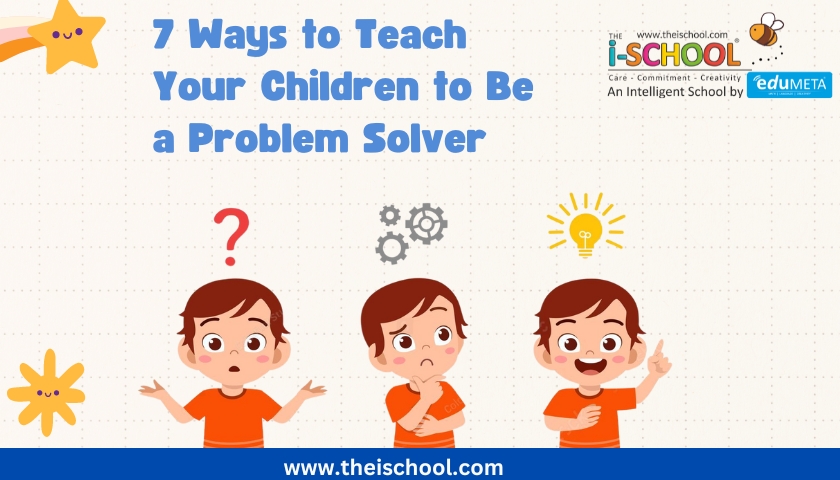7 Ways to Teach Your Children to Be a Problem Solver

Teaching children to be effective problem solvers is an essential life skill that will benefit them in school, relationships, and their future careers. Problem-solving skills help children navigate challenges, make informed decisions, and develop resilience. Here are seven ways to teach your children to be problem solvers.
1. Encourage Critical Thinking
How to Do It:
- Ask Open-Ended Questions: Encourage your child to think critically by asking open-ended questions that require more than a yes or no answer. For example, “What do you think will happen if we try this?” or “How could we solve this problem?”
- Explore Different Perspectives: Help your child see different sides of an issue. Discuss various outcomes and perspectives to broaden their understanding.
Benefits:
- Fosters curiosity and independent thinking.
- Helps children evaluate situations from multiple angles.
2. Model Problem-Solving Behavior
How to Do It:
- Demonstrate Problem-Solving: Let your child see you tackle problems. Talk through your thought process aloud so they can understand how you approach and solve issues.
- Involve Them in Decision-Making: Include your child in age-appropriate decisions, such as planning a family outing or solving a household issue.
Benefits:
- Provides a real-life example of effective problem-solving.
- Shows children that problems can be approached methodically and calmly.
3. Encourage Independence
How to Do It:
- Allow Safe Failures: Let your child experience minor setbacks and learn from them. Avoid rushing to their rescue immediately.
- Provide Opportunities for Responsibility: Give your child tasks that require them to think and act independently, such as managing their homework or planning their time.
Benefits:
- Builds confidence and self-reliance.
- Helps children learn from their mistakes and develop resilience.
4. Teach Steps to Problem-Solving
How to Do It:
- Identify the Problem: Teach your child to clearly define the problem.
- Brainstorm Solutions: Encourage them to come up with several possible solutions.
- Evaluate Options: Discuss the pros and cons of each option.
- Choose and Implement: Help them decide on the best solution and put it into action.
- Review the Outcome: Reflect on the results and discuss what worked or what could be improved.
Benefits:
- Provides a structured approach to tackling problems.
- Helps children develop a systematic way of thinking.
5. Foster a Growth Mindset
How to Do It:
- Praise Effort Over Outcome: Focus on your child’s effort and perseverance rather than just the result. For example, praise them for working hard on a difficult puzzle, regardless of whether they complete it perfectly.
- Encourage Learning from Mistakes: Teach your child that mistakes are opportunities for learning and growth.
Benefits:
- Promotes resilience and perseverance.
- Encourages a positive attitude towards challenges.
6. Use Games and Activities
How to Do It:
- Play Strategy Games: Engage your child in games that require strategic thinking, such as chess, puzzles, or problem-solving apps.
- Role-Playing Scenarios: Create role-playing activities that involve solving hypothetical problems or conflicts.
Benefits:
- Makes learning problem-solving fun and engaging.
- Helps children practice critical thinking and strategy in a playful setting.
7. Create a Supportive Environment
How to Do It:
- Provide Emotional Support: Let your child know it’s okay to struggle and that you’re there to support them.
- Encourage Open Communication: Foster an environment where your child feels comfortable discussing problems and seeking help when needed.
Benefits:
- Builds a safe space for experimentation and learning.
- Enhances trust and open communication between you and your child.
Conclusion
Teaching your children to be problem solvers equips them with essential life skills that will serve them well in various aspects of their lives. By encouraging critical thinking, modeling problem-solving behavior, fostering independence, and creating a supportive environment, you can help your child develop the confidence and skills needed to tackle challenges effectively. Remember, the goal is not just to solve problems for them, but to guide them in learning how to solve problems on their own.
